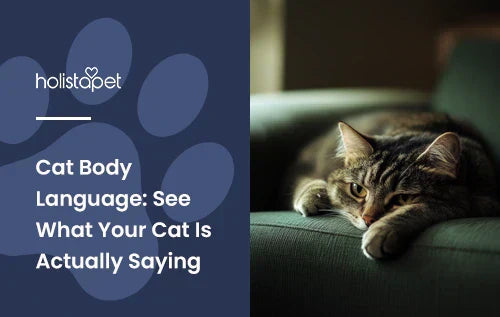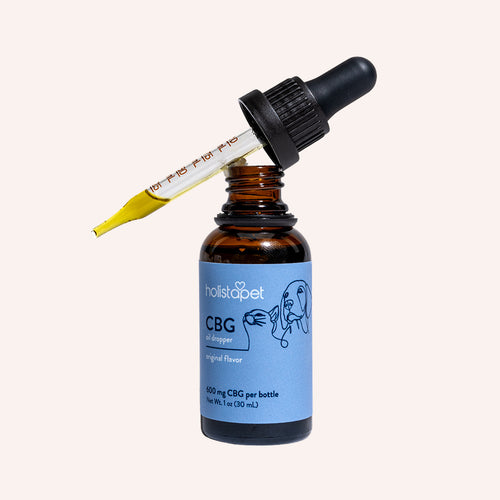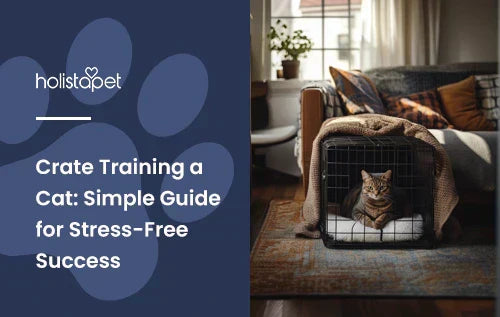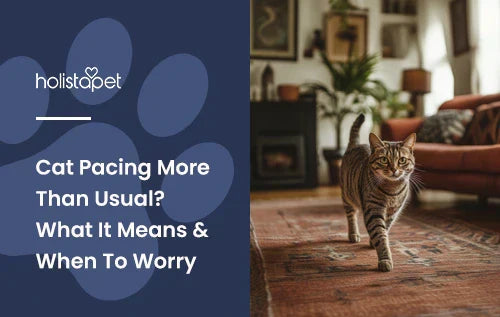Ever wonder what your cat’s tail, ears, or whiskers are trying to tell you? Cats may not speak our language, but they’ve mastered a silent one—cat body language. From slow blinks to puffed-up tails, your feline friend shares big feelings in small ways.
Some signs are loud and clear. Others? Super sneaky. Did you know a cat’s pupils can shrink or widen based on mood, not just light? Wild, right?
If you've ever been confused by twitchy tails or those famous airplane ears, you’re in the right spot. Keep reading to learn how to better understand your cat like a true whisker whisperer.
Why Learning Cat Body Language Matters

Reading cat body language helps you connect with your feline friends on a deeper level. You’ll start to better understand when your cat is happy, upset, or just needs a break. It also keeps you from misreading cat behavior and causing stress.
Body language signs like a twitchy tail or pinned ears can tell you everything. The more you notice, the closer you and your cat become. It’s like learning their secret code.
The Basics of Cat Body Language
Cat body language includes subtle shifts in body posture, ears, and even whiskers. A flick of the tail or a change in cat's pupils can mean everything from joy to fear. These little clues help you better understand your cat's well being.
Eyes, Ears, Tail, and Whiskers – What They Communicate
Tiny features give away big feelings. Always pay attention to these body parts, as they work like mood meters for your feline friends:
- A cat's ears held tightly back or ears turned sideways can mean an upset or fearful
- A tail high shows a happy pet, but a tail low or puffed means feeling threatened
- Whiskers forward signals excitement, especially during hunting behaviors
- Dilated or narrow cat's pupils can reflect excitement, stress, or fear
Full-Body Cues and Context Are Key
A single gesture doesn’t tell the full story. A crouched position might show a cat may feel unsure, but if the body is loose and paws tucked, they’re probably just sitting calmly. Notice how your cat’s tail, head, and legs move together.
Displacement behaviors like licking lips or making biscuits can show feelings of anxiety. Always watch the full cat's body to spot clear signs of comfort or discomfort. Context makes all the difference.
Relaxed Cat Body Language: Signs Your Kitty Feels Safe and Content
A relaxed cat is a happy one. Look for body language signs like a softly swaying tail, upright ears, and loose body posture. A cat is happy when it shows subtle changes like blinking slowly or stretching out. These cues show your cat's well-being is in a good place.
Slow Blinks, Loose Body, Upright Tail
Feline friends often show comfort in calm, easy-to-miss ways. These signs prove your cat may feel safe and happy.
- Slow Blinking. When your cat makes eye contact and starts blinking slowly, it means trust. It’s like a kitty kiss that says, “I feel safe with you.”
- Loose, Floppy Body. A soft body and paws tucked gently show your cat feels chill. Tension-free muscles often mean there’s no fear or feeling of anxiety.
- Tail Standing Tall. A tail high is one of the clear signs your cat is happy. Add a slight curl at the tip, and it’s pure kitty joy.
Common Settings Where Cats Feel Most at Ease
Cats love comfort and cozy corners. These spaces often bring out that calm, relaxed vibe.
- Sunny Spots by the Window. A warm sunbeam makes a great nap zone. Many cats feel calm watching other animals or pets from a safe spot.
- Quiet Hideouts or Shelves. A tucked-away cubby or bookshelf gives your cat a safe space. It helps them stay chill when they need alone time.
- Soft Blankets or Familiar Beds. Soft textures remind your cat of security. Lying on something cozy can help ease any upset or aggressive feelings.
Signs of Stress, Fear, or Discomfort in Cats
Some cats show tension in quiet, sneaky ways. Learning these clear signs can help you spot fear, upset, or discomfort before things get worse.
Flattened Ears, Tense Body, and Twitching Tail
Your cat's body language can shift fast when they're nervous or irritated. These signs often show up together.
- Ears Pinned Back. When your cat's ears flatten, it’s a red flag. This often means feeling threatened, scared, or annoyed.
- Tense, Crouched Body. A stiff body and crouched position show unease. You may also see their legs tucked tightly or paws held close.
- Tail Flicking or Thumping. A fast, twitchy tail is a classic signal of agitation. If the tail low starts thumping, your cat may be close to snapping.
Hiding, Low Growls, or Sudden Avoidance
Behavioral changes say a lot when your cat feels uneasy. These actions often come before a full-on reaction.
- Retreating to Hidden Spots. If your cat vanishes under the bed or behind furniture, it's likely to feel afraid or need a safe space.
- Growling or Deep Meows. Low, steady cat vocalizations can warn you to back off. These sounds often come with wide cat's pupils or pulled-back whiskers.
- Quick Escapes or Avoidance. When a cat makes a fast exit or avoids touch, it’s not being rude. It’s a signal of feeling anxious or overwhelmed.
Aggressive or Defensive Cat Body Language

When a cat feels threatened, its whole vibe changes fast. Body language signs like hissing or raised hair warn you to back off. These moves protect the cat's well-being and space.
Hissing, Arched Back, and Puffed-Up Fur
These signs are bold and hard to miss. They tell you your cat means business.
- Loud Hissing Sound. Hissing is a strong warning. It usually means your cat feels unsafe or pushed too far.
- Arched Back Pose. A tall, arched back makes the cat look bigger. It's all about scaring off whatever caused fear.
- Fluffed-Out Hair. Raised hair on the tail or along the body shows alarm. This classic Halloween look often means danger is near.
Dilated Pupils and Swatting – What They’re Telling You
Wide cat's pupils and fast swipes signal big emotions. These clues pop up during intense cat behavior.
A cat with wide eyes may feel cornered or on alert. It’s reacting to fear, fast movement, or other animals nearby. Swatting with sharp paws shows a defensive move, not always an attack. It can be a warning to give the cat space before things get heated.
Submissive vs. Cautious Behavior – Spotting the Nuance
Some cats stay low or still when unsure. It doesn’t always mean they’re scared. Pay attention to subtle changes in body posture, tail, and ears to read it right. Understanding these shifts can improve your cat's well-being.
Belly Exposure Doesn’t Always Mean “Pet Me”
A stretched-out belly looks like an open invite, but that’s not always the case. This move can mean different things depending on your cat’s body language.
If your cat rolls onto its back and shows its belly while keeping a tail low or ears turned, it could feel vulnerable. This position helps protect their vital areas, not invite belly rubs. It's more about self-defense than trust.
Watch for quick swats or sharp cat vocalizations if you try to reach in. Many cats feel cornered when touched in that position. Always check for clear signs like a relaxed body, soft whiskers, or a loose tail before assuming your cat wants attention.
Low Posture, Head Turned, or Sitting Still
Some cats use stillness as a way to stay in control. This kind of body language shows they're being careful, not necessarily scared.
A crouched position with the head slightly turned means your cat is watching and waiting. It doesn’t want conflict but is staying alert in case something shifts. This is common in new spaces or around other animals.
If your cat sits still with wide cat's pupils and keeps its paws tight to the body, it may feel unsure or upset. The first signs of tension can be easy to miss, so keep an eye on subtle changes like a stiff tail, flattened whiskers, or a frozen stare.
How to Respond to Negative Cat Body Language

When your cat's body language shows tension, fear, or aggressive behavior, it's time to step back and pay attention. Jumping in too fast can make the situation worse. Always read the signs first.
Notice subtle changes like a flicking tail, pinned ears, or a crouched position. Help your feline friends feel better by responding with calm and care. Small actions can protect your cat's well-being.
Tips for Calming an Anxious or Irritated Cat
Sometimes a little chill goes a long way. CBD is an efficient natural calming option for cats. It works by interacting with your cat’s endocannabinoid system (ECS), a network that helps regulate mood, stress response, and internal balance. This natural system plays a big role in how your cat handles tension, making CBD a soothing option for emotional support during stressful situations. Consider these gentle tips to help your cat relax and reset.
- CBD Calming Chews. Great for calming aggressive or overly alert behavior. These chews help your cat relax without any grogginess. Made with soothing CBD and tasty ingredients, they’re ideal for creating a peaceful vibe during tense moments.
- CBD Cat Treats. Crunchy, salmon-flavored bites that feel more like a reward than a remedy. These treats support cats' well-being while calming anxious behaviors. They’re perfect for stressful vet visits or loud noise.
- CBD Oil for Cats. Easy to drop into food or on a treat. CBD oil is a fast-acting way to promote calm, support appetite, and ease nervous or fearful emotions.
- CBD Capsules. Mess-free and easy to serve. These capsules combine hemp seed powder and broad-spectrum CBD to support emotional balance. Ideal for cats needing consistent support in their daily routine.
When to Give Space vs. When to Call the Vet
Not every shift in cat behavior needs a vet visit. Some signs just mean your cat wants a little breathing room. Others point to something more serious. Here’s how to tell them apart.
Give Space If:
- Your cat hides briefly after a loud noise or visitor
- You notice blinking slowly, slight tail flicks, or one ear turned
- They turn their head away or avoid touch for a short time
- Mild upset shows in quiet body posture or light cat vocalizations
- They return to normal within a few hours
Call the Vet If:
- A sudden crouched position or stiff body that doesn’t relax
- Deep growl, constant meow, or strange sounds
- Loss of appetite, no interest in toys, or constant hiding
- Wide cat's pupils, shaking, or stumbling
- Any sign your cat may be feeling sick or in discomfort
Final Thoughts – Understanding Cat Body Language for a Stronger Human-Feline Bond
Reading cat body language helps you connect with your furry friend on a whole new level. From a swishy tail to those slow, sleepy blinks, every move tells a story. When you pay attention to your cat’s well-being, you build trust, comfort, and love. It’s all about catching those body language signs early.
For natural support, HolistaPet offers calming CBD treats, oils, and capsules made just for cats. These natural products may help ease tension and boost peace at home. The more you learn, the stronger your bond becomes. Now that’s purr-worthy!


 CBD Oil for Cats - Fast Acting
CBD Oil for Cats - Fast Acting
 CBD Cat Treats - Easy Dose
CBD Cat Treats - Easy Dose
 CBD Calming Chews for Cats - Highly Rated
CBD Calming Chews for Cats - Highly Rated
 CBG Oil for Dogs and Cats - Loved by Thousands
CBG Oil for Dogs and Cats - Loved by Thousands





Leave a comment
All comments are moderated before being published.
This site is protected by hCaptcha and the hCaptcha Privacy Policy and Terms of Service apply.